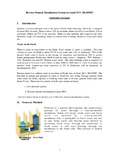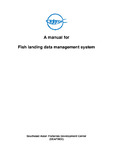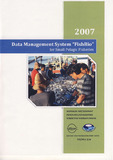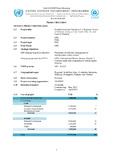Reverse Osmosis Desalination System on board M.V. SEAFDEC
記述
Quantity of water in human body is the factor of body fluid balancing. Our body is compose of about 60% of water. There is about 75% in our brain, Makes up 83% of our blood, 22% in our bones, Makes up 75% of our muscles, Helps to carry nutrients and oxygen to our cells, Moistens oxygen for breathing, Helps to convert food to energy, Removes waste from body etc.
Citation
Choypanit, H. (2016). Reverse Osmosis Desalination System on board M.V. SEAFDEC. SEAFDEC Technical Seminar 2016 (pp. 74-77). Samut Prakan: Training Department, Southeast Asian Fisheries Development Center.
主題
Collections
Related items
Showing items related by title, author, creator and subject.
-
A Manual for Fish Landing Data Management System
Training Department, Southeast Asian Fisheries Development Center (Training Department, Southeast Asian Fisheries Development Center, 2007)A Manual for Fish Landing Data Management System is the user guide on FishBio program. “FishBio” is a database application for managing fishery data Output from the application can be easily exported to other fishery ... -
Data Management System “FishBio” for Small Pelagic Fisheries
Meesomwat, Woraluk; Laongmanee, Penchan; Siriraksophon, Somboon (Training Department, Southeast Asian Fisheries Development Center, 2007)"FishBio" is a database application for managing fishery data Output from the application can be easily exported to other fishery analytical software such as FISAT or the other spreadsheet software "FishBio" is ... -
Establishment and Operation of a Regional System of Fisheries Refugia in the South China Sea and Gulf of Thailand
SEAFDEC/UNEP/GEF/Fisheries Refugia (2015)The South China Sea is a global centre of shallow water marine biological diversity that supports significant fisheries that are important to the food security and export income of Southeast Asian countries. These fisheries ...




